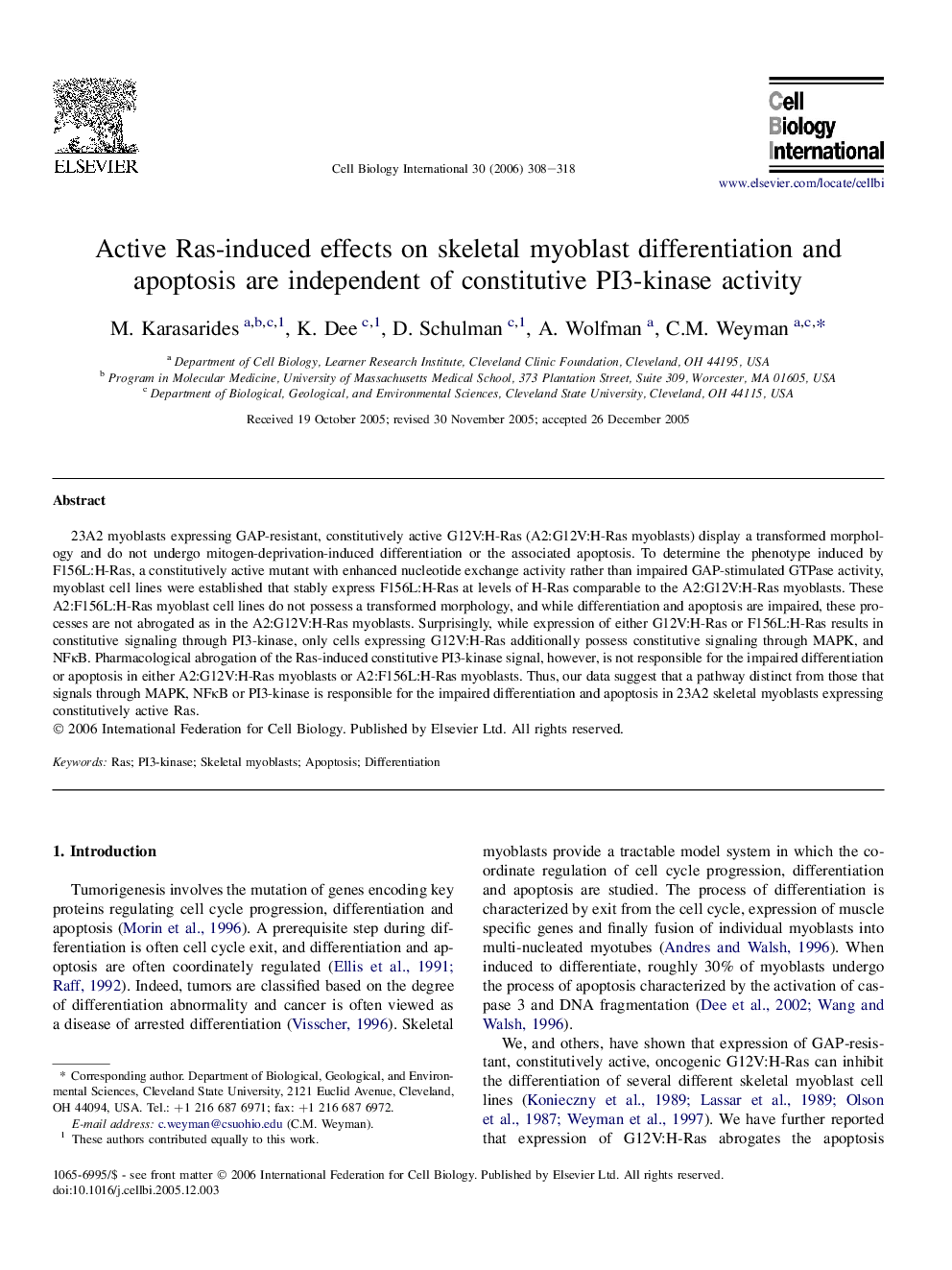| Article ID | Journal | Published Year | Pages | File Type |
|---|---|---|---|---|
| 2067951 | Cell Biology International | 2006 | 11 Pages |
Abstract
23A2 myoblasts expressing GAP-resistant, constitutively active G12V:H-Ras (A2:G12V:H-Ras myoblasts) display a transformed morphology and do not undergo mitogen-deprivation-induced differentiation or the associated apoptosis. To determine the phenotype induced by F156L:H-Ras, a constitutively active mutant with enhanced nucleotide exchange activity rather than impaired GAP-stimulated GTPase activity, myoblast cell lines were established that stably express F156L:H-Ras at levels of H-Ras comparable to the A2:G12V:H-Ras myoblasts. These A2:F156L:H-Ras myoblast cell lines do not possess a transformed morphology, and while differentiation and apoptosis are impaired, these processes are not abrogated as in the A2:G12V:H-Ras myoblasts. Surprisingly, while expression of either G12V:H-Ras or F156L:H-Ras results in constitutive signaling through PI3-kinase, only cells expressing G12V:H-Ras additionally possess constitutive signaling through MAPK, and NFκB. Pharmacological abrogation of the Ras-induced constitutive PI3-kinase signal, however, is not responsible for the impaired differentiation or apoptosis in either A2:G12V:H-Ras myoblasts or A2:F156L:H-Ras myoblasts. Thus, our data suggest that a pathway distinct from those that signals through MAPK, NFκB or PI3-kinase is responsible for the impaired differentiation and apoptosis in 23A2 skeletal myoblasts expressing constitutively active Ras.
Related Topics
Life Sciences
Biochemistry, Genetics and Molecular Biology
Biophysics
Authors
M. Karasarides, K. Dee, D. Schulman, A. Wolfman, C.M. Weyman,
